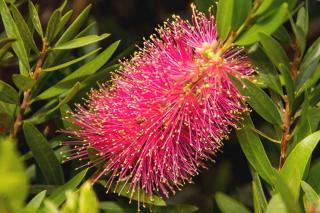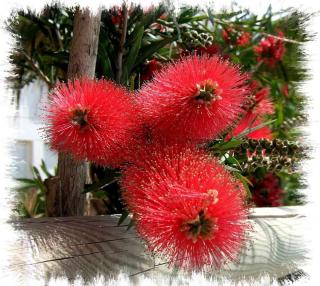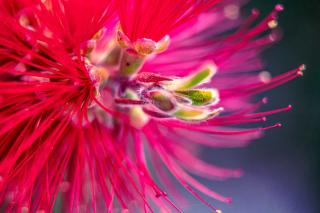

Lemon bottle-brush is a small, original ornamental shrub.
Lemon Bottlebrush facts
Name – Callistemon citrinus
Family – Myrtaceae
Type – shrub
Height – 3 to 10 feet (1 to 3 m)
Exposure – full sun, part sun
Soil: ordinary – Foliage: evergreen – Flowering: spring → fall
Care, from planting to pruning and watering, are steps that help your lemon bottle-brush grow lush.

In Northernmost regions, favor growing lemon bottlebrush in containers so you can bring the pot inside, away from the freezing winter.
You can’t plant lemon bottlebrush outdoors in places with very cold winters.
For growing in pots, select a conventional shrub potting mix.
It is easy to propagate Callistemon bottlebrush through cuttings.

To keep a compact appearance, prune the year’s new shoots back to half their length after the blooming.
In summer, eliminate fruits as they form because this uselessly tires the plant, and cut wilted stems.

Native to Asia, it is inclined towards rather mild climates when grown directly in the garden, but will adapt well to lean-ins and other greenhouses when potted.
You can increase the blooming by often adding liquid organic fertilizer, especially as an indoor plant when the soil tends to quickly lose its nutrients.
You must water regularly in summer but not too much, taking care to water in the evening to reduce evaporation.